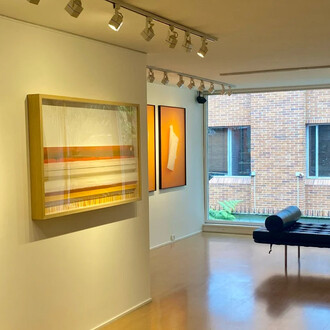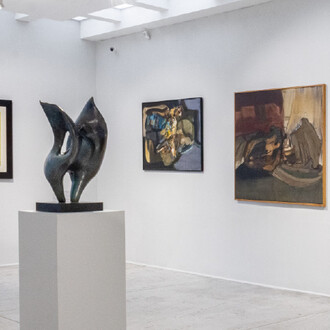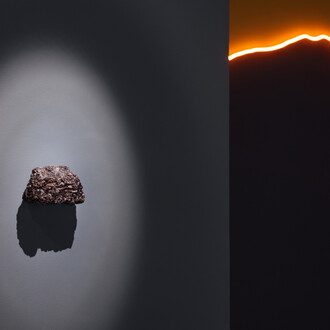If introspection is a way of looking inward to examine one’s own thoughts and delve into the mind, what would happen if the mind were a physical space that could be traversed? And if that place were someone else’s mind, could that “introspection” offer clues to understand others? If so, the path to self-knowledge would be complete by navigating the nooks and passages that shape thought, allowing us to conquer spaces as mysterious and ironically distant as the far reaches of the universe.
In her work, Angélica Chavarro (Bogotá, 1976) offers a possible physical interpretation of her labyrinthine mind. In 2016, the artist underwent an unexpected brain surgery that not only saved her life but also completely changed her perspective and priorities. From then on, the workings of the psyche, the way thought functions, the mysticism that gives faith to the spirit, and the transformation of ideas and desires into form became the new focus of her life and artistic practice. Layers of fabric became an analogy for the veils and textures of the mind—overlapping, intertwining, and converging—while threads can be seen as the connections that weave thought together. Chavarro’s work may appear abstract, though her concern is not with reductive experimentation or formal synthesis, but rather with embodying and giving form to meditative and cognitive processes. These cannot be told in a single narrative or figurative form, but instead emerge through a sense of order, ritual, spatiality, and a poetics of color and light that interact with architecture.
Chavarro rethinks the concept of introspection: it evolves from a gaze into oneself into an immersion in a physical space. Her museum installations become analogies of the mind, opening up and giving way through layers of fabric, inviting viewers to become aware of thought through their senses.
(Text by Christian Padilla, curator, writer, and art historian)















